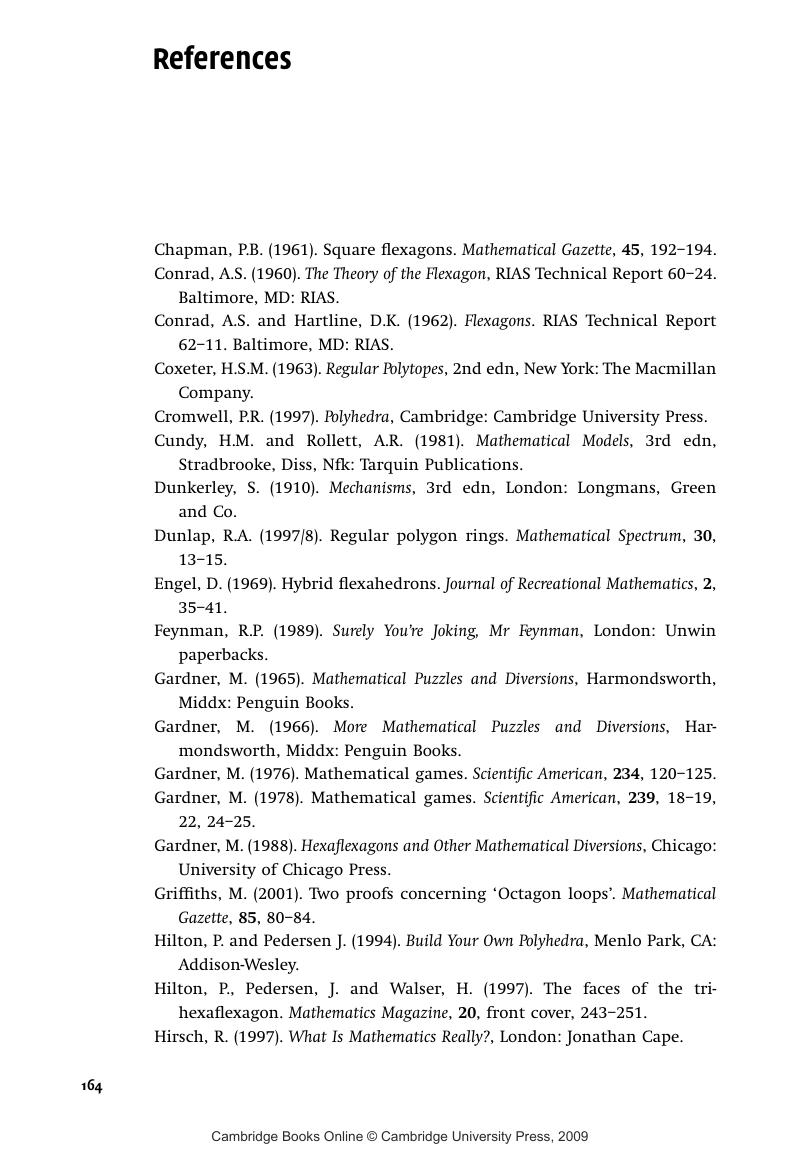Book contents
- Frontmatter
- Contents
- Preface
- List of notation
- Introduction
- 1 Making and flexing flexagons
- 2 Early history of flexagons
- 3 Geometry of flexagons
- 4 Hexaflexagons
- 5 Hexaflexagon variations
- 6 Square flexagons
- 7 Introduction to convex polygon flexagons
- 8 Typical convex polygon flexagons
- 9 Ring flexagons
- 10 Distorted polygon flexagons
- 11 Flexahedra
- References
- Flexagon index
- Subject index
- References
References
Published online by Cambridge University Press: 12 August 2009
- Frontmatter
- Contents
- Preface
- List of notation
- Introduction
- 1 Making and flexing flexagons
- 2 Early history of flexagons
- 3 Geometry of flexagons
- 4 Hexaflexagons
- 5 Hexaflexagon variations
- 6 Square flexagons
- 7 Introduction to convex polygon flexagons
- 8 Typical convex polygon flexagons
- 9 Ring flexagons
- 10 Distorted polygon flexagons
- 11 Flexahedra
- References
- Flexagon index
- Subject index
- References
Summary

- Type
- Chapter
- Information
- Flexagons Inside Out , pp. 164 - 166Publisher: Cambridge University PressPrint publication year: 2003



